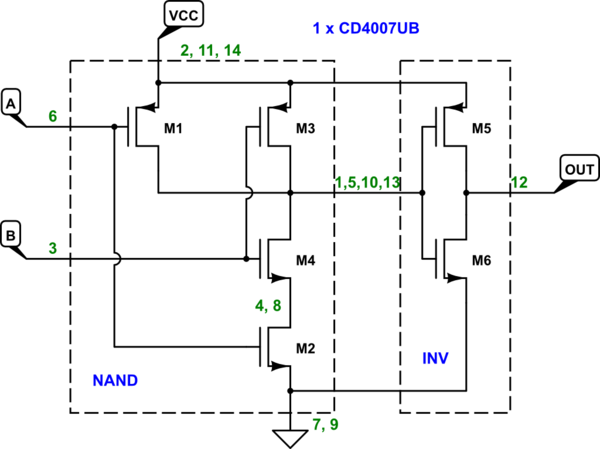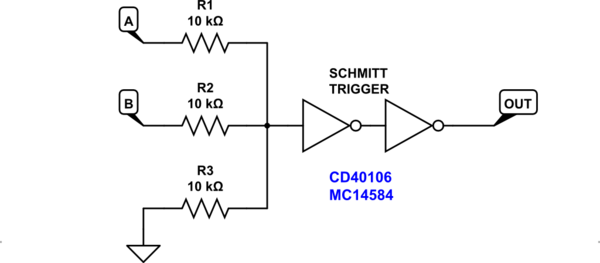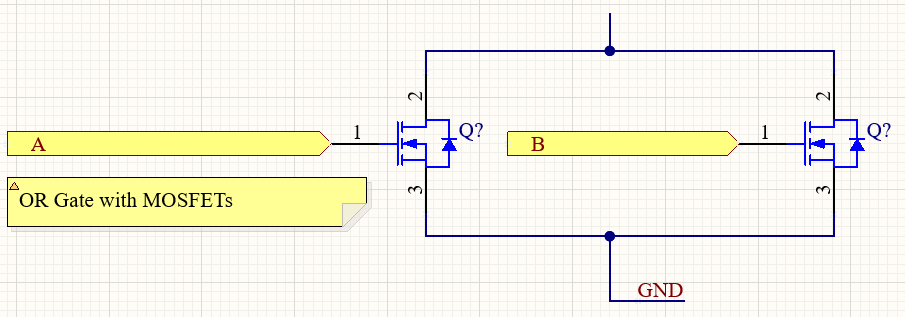A 2-input and gate can be built with just 3 CMOS complementary pairs. You can get all of the transistors needed in a single package: CD4007U.

simulate this circuit – Schematic created using CircuitLab
M1-M4 make a 2-input NAND gate, followed by an inverter made of M5-M6. The green numbers indicate the pins of the CD4007U chip. When multiple numbers are listed, the pins should be connected together. E.g. pins 4 and 8 must be connected together (and to nothing else).
- When either A or B are low, M1 or M3 are pulling the inverter input high.
- When both A and B are high, M2 and M4 are pulling the inverter input low.
This behavior is that of a NAND gate. The inverter buffers and inverts the NAND's output, giving the same output as that of an AND gate.
I have found all AND gates are made using BJTs.
And those "gates" often work terribly poorly too, unfortunately. If you'd want performance similar to CMOS in terms of speed, then look for the schematic of the TTL 7408 AND gate.
You can also implement an AND gate using a single Schmitt-trigger buffer - a CMOS equivalent of RTL (resistor-transistor logic):

simulate this circuit
A non-inverting Schmitt trigger requires 4 CMOS pairs. 3 pairs are used for the Schmitt inverter, and one is used for the output buffer inverter. So it doesn't make sense to design an AND gate this way since it performs just as relatively poorly as RTL did. We could call this architecture "RCL" - Resistor CMOS Logic :)

simulate this circuit

 But I need a AND one.
But I need a AND one.



